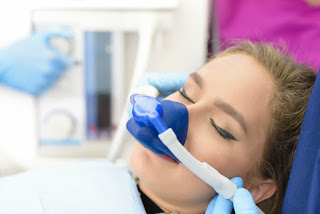Tooth extraction or the Removal of a tooth.
Dentists and oral surgeons remove teeth for various reasons .The right type of tooth extraction depends on the tooth’s shape, size, position, and location in the mouth. Dental surgeons may classify extractions as simple or surgical. A simple Tooth extraction involves a tooth that is visible above the gums and that a dentist can remove in one piece .A surgical extraction is more complicated and involves the removal of gum tissue, bone, or both. The surgeon may need to remove the tooth in pieces. Wisdom teeth are the last to erupt and usually the first to require extraction because in many people, they are impacted. This means that they have not fully emerged from the gums. Wisdom teeth extraction is a common procedure in oral surgery. The Hempstead Dental is conveniently located near to the 641 10th St, Hempstead. We also provide various dental services in the nearby cities of Waller and Belleville is the best option available and affordable dentist and is the best option available near you.
A person will have a consultation with their dentist or oral surgeon prior to the extraction. During the consultation, the doctor will ask for a thorough medical history. They will also ask about any medications that the person is taking. Some people need to stop or start taking certain medications in the days leading up to the surgery,
Stopping blood thinners
Many people take blood thinning medication to prevent the formation of blood clots in vessels. These medications can lead to more bleeding during surgery. Anyone who takes blood thinners should let their dental surgeon know during the consultation. Typically, people do not need to stop taking blood thinners prior to tooth extractions. Anyone considering stopping this treatment should consult their dentist or physician first.
Starting antibiotics
In a few circumstances, a dentist may prescribe antibiotics before a tooth extraction. Toothaches without swelling do not require antibiotics. Always take antibiotics exactly as directed by a doctor. A person may need antibiotics if they have a high risk of infective endocarditis.
general anesthetic
A person who receives general anesthetic will be completely asleep during the procedure . Some dentists do not have the options above at their offices. If a person requires any of these, they should let their dentist know during the consultation, and the dentist may refer them to an oral surgeon.
Procedure
Before starting the extraction, the surgeon will take an X-ray of the person’s tooth. This imaging will help them evaluate the curvature and angle of the tooth’s root. Once the local anesthetic has numbed the area, the surgeon will begin the extraction. They may remove the tooth in several pieces. If the tooth is concealed beneath gum tissue or bone, the doctor may need to cut away the gum or remove the obstructing area of bone.
A person should not feel pain, but they can expect to feel pressure against the tooth. They may also hear grinding and cracking of bone or teeth. Some people find the experience unpleasant and distressing. If a person does feel any pain, they should notify their dentist or oral surgeon immediately. The doctor will administer more numbing agent.
Aftercare
After the extraction, stitches or additional procedures to control the bleeding may be necessary. The dentist or surgeon will place a thick layer of gauze over the extraction site and have the person bite on it to absorb the blood and start the clotting process.
Call us at (979) 826-4040 or visit www.hempsteaddentaltx.com to schedule your appointment.




Comments
Post a Comment